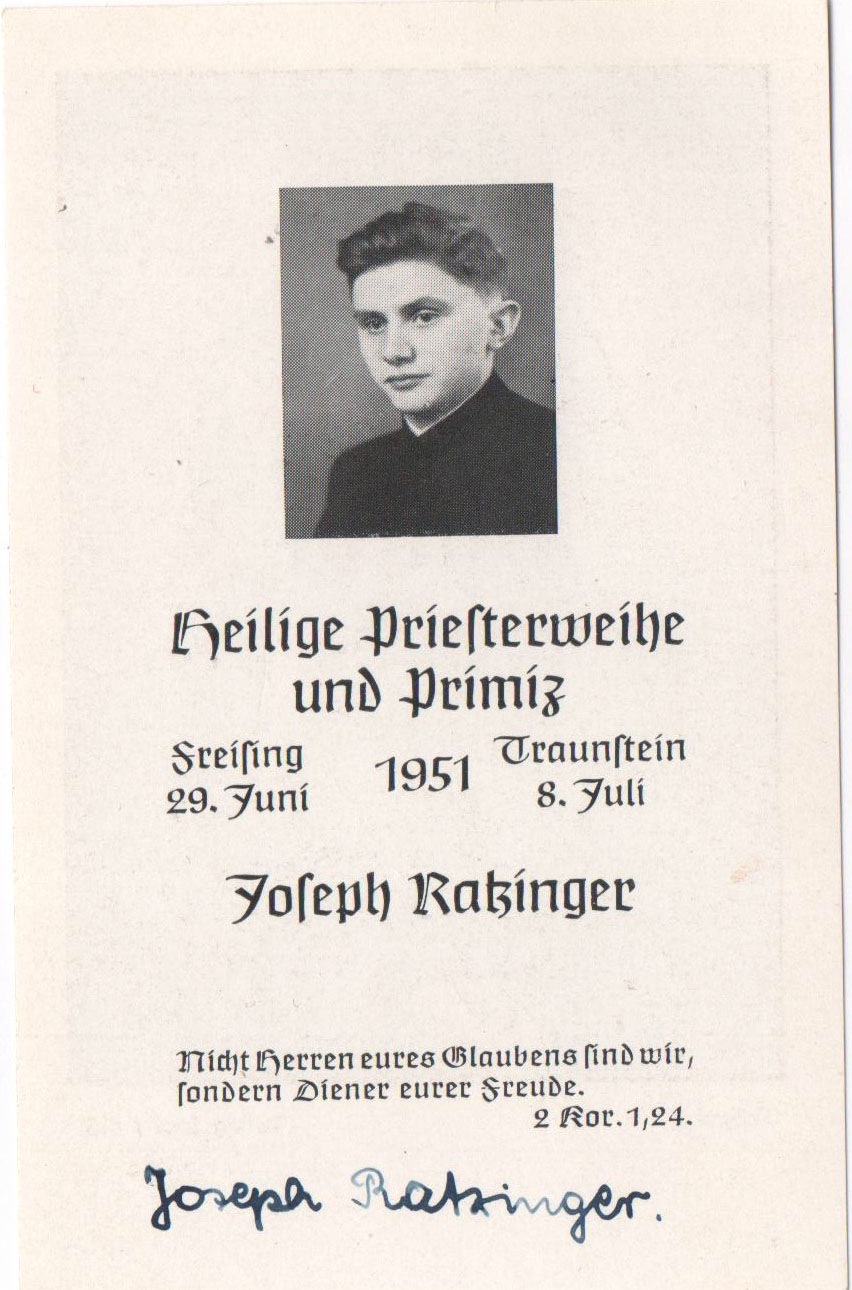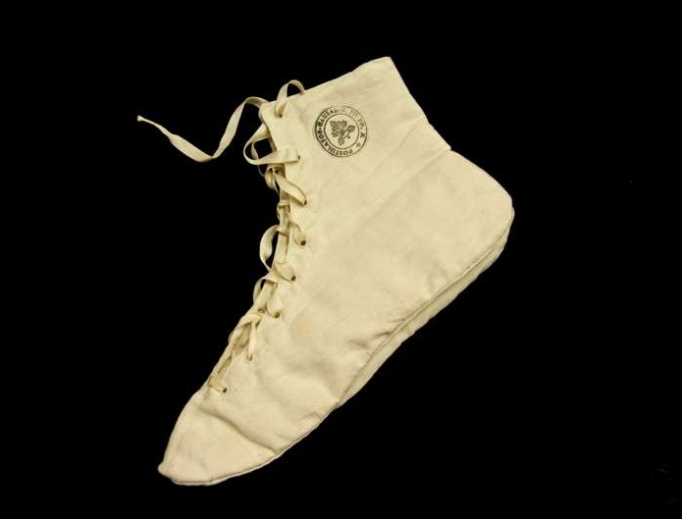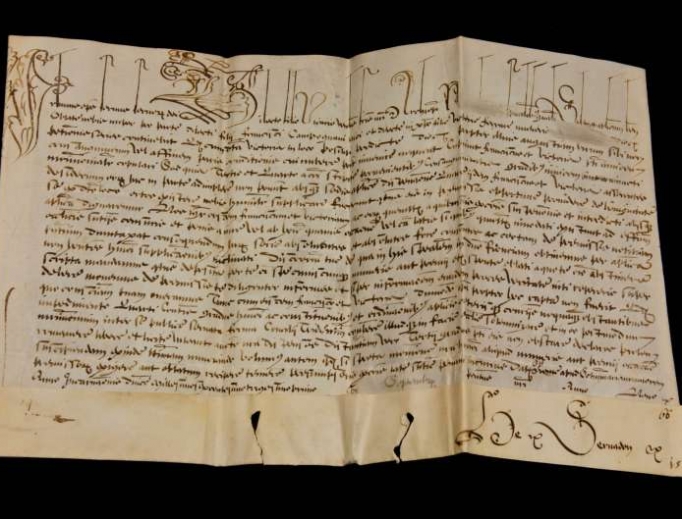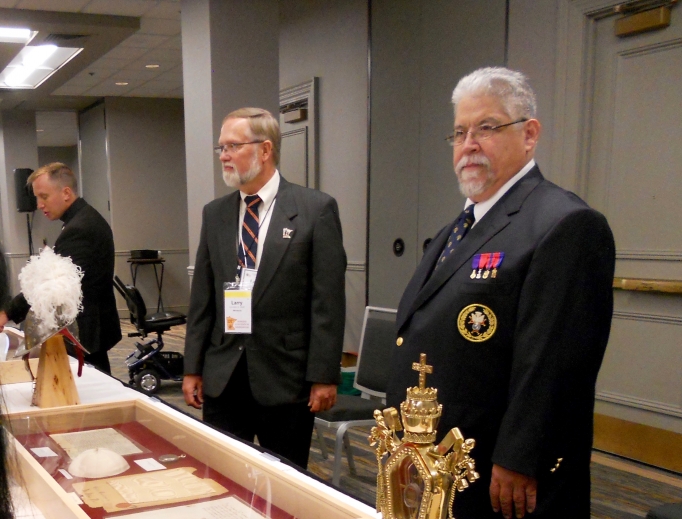Artifact Collection Offers Fascinating Look at Papal History
The mission of one priest highlights the past and popes.

A holy card commemorating the ordination of Joseph Ratzinger (the future Pope Benedict XVI), a reliquary containing a bone fragment of Pope St. Victor (who died in A.D. 199) and autographs from every pontiff since 1623 figure among the more than 1,000 papal artifacts collected by Father Richard Kunst.
“My hope for this collection is always to draw people to have a greater love for our Holy Father,” said Father Kunst, pastor of St. James and St. Elizabeth parishes in Duluth, Minnesota.
Father Kunst houses most of his treasures in Duluth’s diocesan archives, but each week he shares them with at least 1,000 visitors to his website, PapalArtifacts.com.

A Passion for Papal History
As a teenager, the future priest collected autographs of politicians, athletes and movie stars. In 1995, he discovered papal autographs and sold his original collection in order to finance this new one. Before long, he began purchasing other memorabilia of individual popes.
Because the vocation crisis in Europe has led to the shuttering of convents and monasteries and to the liquidation of their contents, many historic religious articles now appear for sale on the worldwide web. Father Kunst has acquired Catholic memorabilia on eBay Italy, for example, and he won an auction in Great Britain for Cardinal Domenico Svampa’s ballot and “scrutiny” sheet, a tally of votes for each cardinal, from the 1903 conclave that elected Pope St. Pius X.
Father Kunst acknowledged that those two papers should have been burned at the conclave, in keeping with Vatican rules. He speculated that Cardinal Svampa did not destroy them because he recognized the election’s historic significance.
“There was a law from the 1600s all the way up to 1903, where certain Catholic heads of state could actually stop a [papal] election,” Father Kunst explained.
In 1903, Emperor Franz Joseph of Austria directed a Polish cardinal to veto the election of Cardinal Mariano Rampolla if he became the frontrunner. The scrutiny sheet proves that Cardinal Rampolla would, in fact, have been elected, if not for this veto. The conclave then chose Cardinal Giuseppe Sarto, who became Pope Pius X. He immediately abolished the veto privilege and decreed that anyone interfering with a papal election would be excommunicated.
The story is indicative of Father Kunst’s vast knowledge of the popes.
“I’ve learned papal history because I fell in love with it,” Father Kunst said. “As I was learning and collecting, I was reading everything I could find on papal history.”
His collection includes several items belonging to Pope St. Pius X, the man elected in that controversial conclave, such as a pair of slippers his sisters fashioned for him because of his poor foot circulation.


Father Kunst has a papal bull issued by Pope Urban VII, who succumbed to malaria in 1590. His 13-day papacy was the shortest on record. Father Kunst also acquired a first-class relic of Pope St. Celestine V encased in a bronze reliquary. The saint, who died in 1296, was the last pontiff to willingly resign until Pope Benedict XVI did so in 2013.
EWTN aired a miniseries, The Papacy: A Living History, about the collection several years ago, and Father Kunst sees a bump in traffic to his website whenever an episode is repeated.
The secular media, too, have discovered the website. A decade ago, Mark Hall-Patton contacted Father Kunst for advice about an item that was appearing on the Pawn Stars television series. Hall-Patton, one of the experts featured on the show, now consults Father Kunst whenever Catholic objects turn up on the program.
Favorite Acquisitions
Father Kunst spends much of his modest priest’s salary on the artifacts, and he has developed strong connections to dealers and other collectors. In fact, another collector helped him buy the pricey scrutiny sheet.
“There is a true market for these things, a small but competitive one,” Father Kunst said.
Of all the articles in his collection, Father Kunst cherishes most a chasuble Pope St. John Paul II wore in Denver on the Solemnity of the Assumption, Aug. 15, 1993, for the closing Mass of World Youth Day. The vestment features the letters “A” and “M” (Ave Maria) for the Virgin Mary on the front and the Pope’s coat of arms on the back. Father Kunst wore this chasuble while concelebrating the Pope’s beatification Mass; he does not plan to wear it again.
Today, the collection also boasts a zucchetto from each pope since 1846.
Another favorite item is a large document signed twice by Pope Julius II.
“He’s known as Julius the Terrible or Julius the Warrior Pope,” Father Kunst said of the strong-willed pontiff who led soldiers into battle defending the Papal States.
“He established the Swiss Guard, the Vatican Museum and he laid the cornerstone of St. Peter’s Basilica.”

Educating Catholics
Father Kunst writes a column for his diocesan newspaper, The Northern Cross, on a variety of subjects. He displays some of his artifacts whenever he gives a lecture about the collection or about papal history. During the Knights of Columbus convention held in Minneapolis in August, he addressed the ladies’ luncheon, regaling 440 women and six bishops with stories about his acquisitions.
He presented the entire collection in “The Vatican Comes to Duluth,” a 2004 fundraiser for seminarians that netted $122,000. His collection has doubled since then. In honor of Pope St. John Paul II’s 100th birthday, Father Kunst will display the most significant items in “The Vatican Returns to Duluth” an exhibit at the Duluth Entertainment Convention Center August 6-9, 2020. Proceeds will benefit diocesan schools. (Details will appear later at PapalArtifacts.com)
Father Kunst hopes to find a way to permanently display the collection, but he knows this will not be easy. Some articles are fragile; some are extremely valuable; and some are relics. Besides providing a proper reverence for these objects in paritcular, Father Kunst said there are also a number of practical issues involved in exhibiting his collection.
“It’s not a simple thing,” Father Kunst said. “Everything has to be done right. Displays, climate control, security, the building.”
Still, a permanent home for his collection of Papal artifacts would provide an enduring benefit to the faithful.
“An oft-repeated line of mine is that you cannot love something you know little about,” Father Kunst said. “The more we learn about our Church and our popes the more we will love them which will instill a greater reverence.”
Jerri Donohue writes from Brecksville, Ohio.
- Keywords:
- jerri donohue
- papal history

















